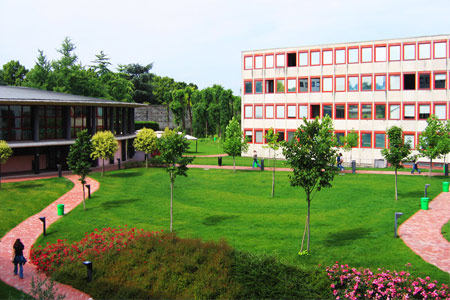Telling the truth: forms of `authentic’ narration in 17th and 18th century English literature
The course will deal with the changing notion of plausible narration in a period which allowed for the rise of new narrative genres according to the expectations of a growing bourgeois society. The epic and the novelistic patterns will therefore be examined and compared through an analysis of sections of Milton’s Paradise Lost, and two major, and mutually antithetical, 18th century novels: Defoe’s Robinson Crusoe and Sterne’s Tristram Shandy. Through this investigation both Milton’s narrative techniques meant to bypass the puritanical iconoclasm against vivid description, and Defoe’s and Sterne’s strategies of narrative authentication aimed at verisimilitude will be thoroughly exposed.
Bibliography
1) Texts:
• J. Milton, Paradise Lost, Book II, a cura di R. Sanesi, Milano, Mondadori, 2004
• D. Defoe, Robinson Crusoe (any English or parallel text edition)
• L. Sterne, Tristram Shandy (any English or parallel text edition – a selection of passages will be indicated during the course, although the reading of the whole text is recommended)
• During the course students will be provided with integrative handouts
2) References:
• Frank Kermode, “Adamo senza paradiso”, in J. Milton, Paradise Lost, a cura di R. Sanesi, Milano, Mondadori, 2004, pp. vii-xxxv;
• Patrick Cook, Milton, Spenser and the epic tradition, Aldershot, Ashgate,1999, pp. 5-35 and pp. 134-179;
• L. Innocenti, “Iconoclasm and iconicity in seventeenth-century English poetry”, in The motivated sign, ed. by O. Fischer and Max Nänny, Amsterdam /Philadelphia, John Benjamins, 2001, pp. 211-17;
• L. Innocenti, “Introduzione”, J. Clegg, “Defoe, evidenze and eye-witness”, G. Sertoli, “Cronologia e veridicità in Defoe”, P. Amalfitano, “`Story’, `history’ e `fiction’. Note sul “Tristram Shandy’ di Laurence Sterne”, in L. Innocenti (a cura di), L’invenzione del vero. Forme dell’autenticazione nel romanzo inglese del ’700, Pisa, Pacini editore, 1999, pp. 5-77, 167-88;
• Ian Watt, Le origini del romanzo borghese, Milano, Bompiani, 1997 (or English edition).
• As regards the literary and cultural context spanning from the Restoration to the Victorian age included, students are free to choose among the following handbooks:
- Ronald Carter & John McRae, The Routledge History of English Literature, London, Routledge, 2001;
- A. Sanders, The Short Oxford History of English Literature, Oxford, Clarendon Press, 2004
To facilitate textual reading, students may refer to any of the following handbooks of narratology, rhetoric, stylistics and poetics:
• A. Marchese, L’officina del racconto, Milano, Mondadori, 1983
• Bice Mortara Garavelli, Manuale di retorica, Milano, Bompiani, 1999
• Maria Pia Ellero, Introduzione alla retorica, Firenze, Sansoni Editore, 1997
• A. Marchese, Dizionario di retorica e stilistica, Milano, Mondadori, 2002
• A. Marchese, L’officina della poesia, Milano, Mondadori, 1997
Additional references for non-attending students
• Henry Fielding, Joseph Andrews (any English edition)
• Jonathan Swift, Gulliver’s Travels (any English edition)
• L. Sterne, A Sentimental Journey (any English edition)







